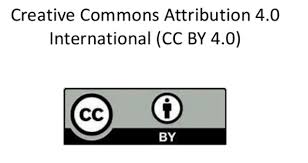Assessment of economic profitability and soil nutrient status of Eucalyptus and Gamar based agroforestry practices in the Madhupur Sal forest of Bangladesh
DOI:
https://doi.org/10.47440/JAFE.2020.1207Keywords:
Agroforestry, Eucalyptus, Gamar, Economic profitability, Soil nutrient statusAbstract
The study was carried out in the Madhupur Sal forest of Bangladesh to assess the economic profitability and soil nutrient status of Eucalyptus and Gamar based agroforestry practices based on the data from July 2017 to September 2018. Four different agroforestry practices viz. Eucalyptus-Akashmoni-TeakPapaya-Ginger-Pineapple-Banana, Eucalyptus-Akashmoni-Turmeric-Banana, Gamar-Akashmoni-Acacia hybrid-Goraneem-Pineapple-Papaya-Banana and Gamar-Akashmoni-Acacia hybrid-Kalomegh along with their non-agroforestry practices (NAFPs) (except tree) having 0.2 ha plot area were selected through literature review, focus group discussion and practical observation. In order to calculate the economic profitability of respective agroforestry practices as well as NAFPs, data related to incurred cost, gross return, net return from tree and crop components, soil samples for chemical analysis were collected from each plot. The benefit-cost ratio (BCR) and land equivalent ratio (LER) for each of the selected agroforestry practices were determined. The results of the study showed that all the selected agroforestry practices were more profitable than their NAFPs. The net return, BCR, and LER (707110 Tk/ha, 3.87 and 1.76, respectively) indicated that the Eucalyptus-Akashmoni-Teak-Papaya-GingerBanana-Pineapple based agroforestry practice was economically more profitable followed by Gamar-Akashmoni-Acacia hybrid-Goraneem-Pineapple-PapayaBanana, Eucalyptus-Akashmoni-Turmeric-Banana, and Gamar-AkashmoniAcacia hybrid-Kalomegh based agroforestry practices. Moreover, soil nutrient status like organic matter (%), total N (%), available P (ppm) and exchangeable K (meq/100g soil) of all of the selected agroforestry practices were mostly higher than their non-agroforestry practices. Therefore, it can be concluded that agroforestry practices are economically more profitable than the cultivation of their sole cropping systems which also helps to reduce the use of chemical fertilizer.






 Publisher:
Publisher: 